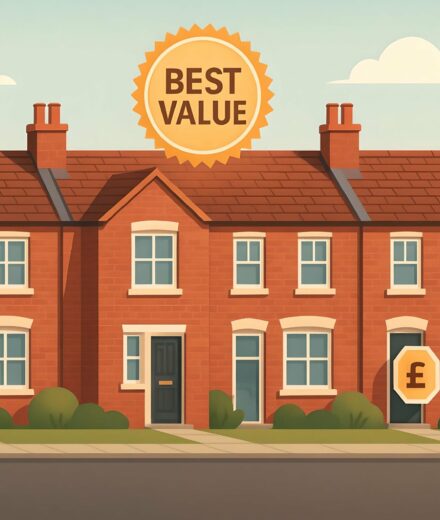

It’s not a guessing game when you’ve got this much recorded data. Grimsby’s market gives away a lot if you know where to look.
You’ll find this page structured around real data – from property price changes to movement across transaction bands – helping you see where things are heading and how fast they’re moving.
House Prices > Grimsby
| Year | Average Price | Transactions |
|---|---|---|
| 2025 (proj.) | £174,900 | 2,290 |
| 2024 | £171,900 | 1,708 |
| 2023 | £168,900 | 1,912 |
| 2022 | £178,300 | 2,707 |
| 2021 | £170,200 | 3,132 |
| 2020 | £164,600 | 2,099 |
| 2019 | £156,000 | 2,289 |
| 2018 | £155,300 | 2,181 |
If you look closely at Grimsby since 2018, the property market has been pacing upward like eager shoppers down Freeman Street Market on a Saturday. At the same time, it’s not been entirely one-way traffic. While average property values have shown a measured climb, transaction numbers have twisted and dipped, reflecting both resilience and moments of caution.
Let’s call out a handful of themes we’re seeing:
If you’re sizing up a move, it’s smart to look beyond the occasional squall. Grimsby’s core strengths - affordability, community, and future opportunity - are quietly powering the market’s gentle upward journey.
Prices, styles, and sizes vary, so it’s worth checking our homes for sale in Grimsby.
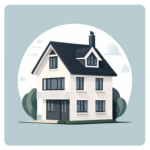
Avg. Property Price: £279,100
Avg. Size of Property
1,404 sq/ft
Avg. Cost Per Sq/ft
£208 sq/ft
Total transactions
951 (since 2021)
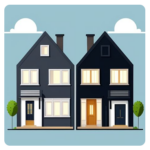
Avg. Property Price: £159,700
Avg. Size of Property
953 sq/ft
Avg. Cost Per Sq/ft
£172 sq/ft
Total transactions
1,685 (since 2021)
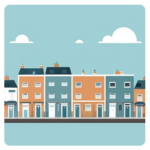
Avg. Property Price: £91,200
Avg. Size of Property
913 sq/ft
Avg. Cost Per Sq/ft
£103 sq/ft
Total transactions
2,595 (since 2021)
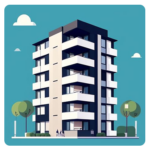
Avg. Property Price: £82,600
Avg. Size of Property
681 sq/ft
Avg. Cost Per Sq/ft
£123 sq/ft
Total transactions
81 (since 2021)
Grimsby’s property market tells a vivid, even odd, story when you look beyond the headline numbers. Prices have ballooned in certain segments, while others remain unusually budget-friendly, almost as if value has been tucked away in unexpected corners of town. The last few years have seen thousands of properties change hands, but what does this say about demand, buyer psyche, and the future?
Let’s peel this back. Detached homes come with a notably higher ticket price but also a naturally larger footprint. This makes their cost per square foot distinctively higher, putting them at the pinnacle for buyers who crave privacy, garden space, and quieter, leafy streets. Yet, is that premium entirely justified? Are we simply paying for room to breathe, or are buyers chasing prestige in a town where practicality has always ruled?
Flats, by contrast, sit at the absolute bottom of the market for price and size. Their cost per square foot is remarkably modest, but transaction volumes are virtually a trickle compared to houses. Could this reflect lingering stigma, lack of new-build supply, or is it just that Grimsby remains a place where the dream is, stubbornly, a house and plot? For single buyers or would-be investors, flats are an arresting opportunity, but will latent demand ever really catch up?
The semi-detached property stands right in the sweet spot - Grimsby’s not-so-secret ingredient. These homes marry family-sized layouts with midrange cost per square foot, resulting in a bustling transaction volume. If we, at M0VE, had to bet on which segment will outpace inflation in the next cycle, semi-detached homes would be right at the top of the pile. Are they perhaps even a little undervalued, considering lifestyle and local earnings? Here’s how not to undervalue your own Grimsby home.
Finally, terraced properties move with speed and conviction, tallying the highest number of sales in recent years. Their smaller sizes and competitive entry prices echo Grimsby’s working class heritage, offering an accessible rung for first-time buyers, but also drawing both private landlords and “fixer-upper” fans. Yet, with prices still lagging behind most regional rivals, is this a bargain or just a new baseline in affordability? Will their popularity continue if mortgage costs stop rising, or could we see a sudden, frothy jump as buyers chase ever-dwindling stock?
| District | Avg Price (£) | Transactions |
|---|---|---|
| DN31 | £92,300 | 1,466 |
| DN32 | £112,900 | 3,235 |
| DN33 | £170,000 | 2,411 |
| DN34 | £130,100 | 2,284 |
| DN36 | £228,600 | 3,494 |
| DN37 | £208,500 | 2,404 |
| DN41 | £217,000 | 851 |
Across Grimsby, property prices rarely march in step from one district to the next. Instead, you’ll find a patchwork of neighbourhoods, each with its own tempo and personality, reflected in both the numbers and the vibe on the streets.
If you’re drawn to the value-driven districts, then Grimsby's urban core is as accessible as a stroll down Freeman Street. Prices start comfortably low here, especially around the town centre, offering entry for buyers and investors alike. Yet, these areas are by no means sleepy – activity levels remain solid, demonstrating that even the more affordable patches see no shortage of key jangle and front-door moments. You can see just how wallet-friendly these spots are in our Grimsby’s Most Budget-Friendly Postcodes.
Step out towards the suburbs and things begin to change pace. Some areas swing into more aspirational territory: larger plots, detached homes, and tree-lined avenues become the norm. Property values climb higher in these spots, but they’re not completely out of reach – more like a tempting treat at the end of a brisk Humber-side walk. Here, demand keeps its steady drumbeat, as buyers searching for extra breathing room and privacy are willing to pay a bit more for it.
But it’s not just about prices ticking up as you move away from town. There are pockets, especially on the fringes, where prices feel positively robust, with homes feeling a tad grander than your standard Grimsby terrace. These districts might not see wild sales figures, but there’s a quiet confidence in their stability – and a sense that their blend of space, security and lifestyle holds perennial appeal.
One thing’s clear: Grimsby's property market in 2025 is tiptoeing up – not a sprint, but each district offers its own kind of opportunity. Families keen on back gardens and tranquil streets will feel just as at home as city-centre dwellers hunting for affordable options that don’t skimp on convenience or character.
Whether you’re looking for your first rung on the ladder or aspiring to that forever home, Grimsby’s districts present a full spectrum of choices. For more on why prices differ so dramatically across town, take a look at our property price comparison guide.
Please also check out the following areas in Grimsby for further insights:
| City | Avg Price (£) | Transactions |
|---|---|---|
| Cleethorpes | £147,800 | 3,863 |
| Immingham | £143,800 | 1,179 |
| Louth | £228,600 | 3,373 |
| Withernsea | £131,800 | 765 |
| Barrow-Upon-Humber | £228,300 | 583 |
| Market Rasen | £240,200 | 1,983 |
| Brigg | £198,100 | 1,350 |
| Barton-Upon-Humber | £180,000 | 1,608 |
| Hull | £142,300 | 25,035 |
| Hessle | £213,800 | 2,205 |
If we zoom in on house prices across Grimsby’s neighbouring towns and villages, you’ll spot a market with striking variety. Some areas are tiptoeing upward with moderate, measured growth, while others are downright humble in price, attracting those unwilling to overstretch. Transaction figures, meanwhile, range from quietly sluggish to energetically brisk—a vivid reflection of local tastes and priorities.
Let’s break down a few revealing themes:
Thinking about buying in Grimsby versus one of its neighbours? You’ll find meaningful variety in both pace and pricing. For some, the extra chunk required for Louth or Market Rasen means trading up to elegant settings. For others, the lively energy and affordability found in Cleethorpes, or the sheer scale of Hull’s transactions, promises more value with every purchase.
The upshot: You’re spoilt for choice around Grimsby. House prices and turnover don’t march to the same tune, so you can choose a setting—and a budget—that matches your plans. Even in this part of Lincolnshire, there’s no single, dominant trend—just a patchwork of local stories waiting to unfold.
Quick reminder: the averages here cover property sale prices and transactions only.
Property size and cost per square foot are not factored in, meaning some shifts may be missed. To explore further, visit our blog.
We measure with care, not haste. Every property value is processed through our smart engine (adjusted for size, build, location and more), producing something gently reliable. View our full breakdown
Our site uses cookies. By using this site, you agree to the Privacy Policy and Terms of Use.